how "meet the robinsons" accidentally predicted the collapse of the internet
confessions of a girl who believed tech could be tender
Confession: When I was thirteen, I ran a Tumblr blog dedicated to shipping Wilbur from Meet the Robinsons and Violet from The Incredibles.
STOP!! I didn’t want to tell you that, but I read that shocking news makes good hooks for essays. So, I’m trying it out.
Yes, I’m embarrassed. No, I will not be taking questions. Please know that I am only telling you this to establish my credentials.
This is the last time I will speak on this issue.
Thank you.
Now that I’ve earned your trust, let’s talk about Meet the Robinsons—a movie that didn’t just predict the future, but tried to offer us a better one.
And we built LinkedIn instead.
Please hit play.
[in Ken Burns voice-over style]
It was colorful. It was chaotic. It was inventive. It was weird in the way only a film with a barbershop quartet of frogs in tuxedos can be. And while we were busy laughing at the dinosaur with little arms—
—and the word “bowler,”1 Meet the Robinsons was Pavlov-ing us into craving something gentler. A kind of tech that feels more like art and less like control2.
We were supposed to build that future.
Instead, we got this one.
The Future We Were Promised vs. The Hell We Built
[Back to my voice. It’s me again. Hey guys!]
I loved3 Meet the Robinsons because in its version of the future, tech wasn’t minimalist or sterile. It was weird. Handmade, loud, and buzzing with the energy of a sixth grade science fair.
It imagined a world where inventions didn’t count your calories4 or log your keystrokes to prove you’re productive enough to keep your job—they made peanut butter and jelly sandwiches. They made you laugh. They helped you cry. They were there to help you cope with your mommy issues and existential dread.
There was a scanner to find Lewis' birth mom5. A robot named Carl who is canonically mentally unwell and still somehow the most responsible adult in the movie. Monorails and moving sidewalks that actually take you somewhere meaningful, not just Hudson News in Terminal C where you spend $17 on a water bottle.
It was a future built by little guys with big dreams and even bigger abandonment issues. And I can't stop thinking about the version of the world we could've had if we'd let those weird little guys run the internet instead of the Stanford dropouts with god complexes we chose today.
Goob Was the First Reply Guy
But first, let’s talk about the prophecy the movie foretold.
Ya’ll remember Goob? The sleep-deprived, bitter, orphaned baseball kid who grows up to become a bowler6 hat-wearing supervillain?
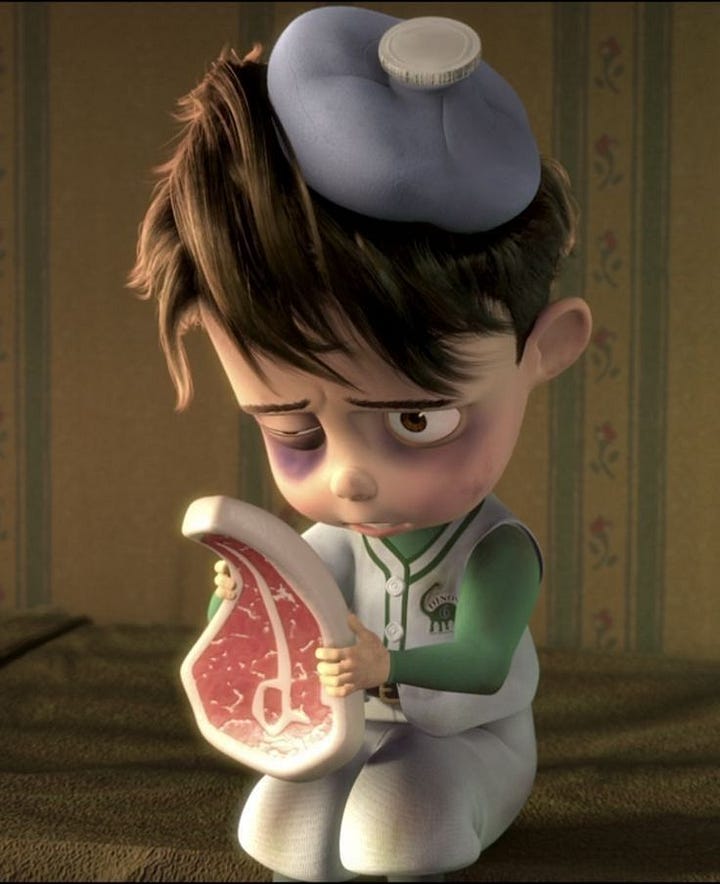
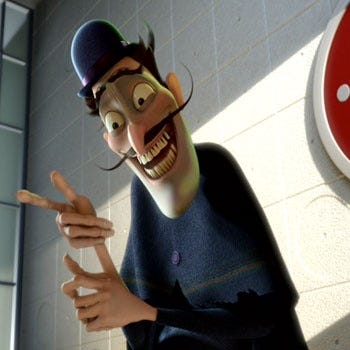
Yeah. That guy.
Goob wasn’t just comic relief. He was a warning.
He’s what happens when you convince yourself you’re hated even when people around you are trying to hand you juice boxes and emotional stability. When you let resentment fester. When you get too online. When you mistake algorithmic validation for real connection, and come back with Reddit gold and a podcast mic.
When you spiral for hours in an endless loop of videos curated to keep you scrolling, seething, engaged.
And Doris, the sentient bowler7 hat whispering in his ear, feeding him bad advice and passive-aggressive prompts, is the algorithm. The content loop. The TikTok feed. It’s the voice that says, “You’re right. Stay mad. Here’s more content to prove it”, and then hands you a five-minute loop of your antithesis just to keep you watching. Doris is the tarot card reader on your FYP right after you get dumped.
Lewis built out of grief. Goob built out of spite.
One gave us a future worth imagining. The other gave us… X.
We Were Promised the Robinsons’ Dining Room
Do you remember that dinner scene where Lewis is suddenly thrown into this giant, fever-dream family meal where there’s an uncle pretending to be a puppet pretending to be an aunt, a meatball cannon going off in the background, someone’s arguing with a singing frog—basically a Looney Tunes dinner party.
It felt like home. Like community8. Like what the internet used to promise before everything got optimized. Like Tumblr before the porn ban.
The Robinsons didn't build for scale. Their inventions weren't sleek.
Or efficient.
Or optimized.
Y’all, they usually didn't even work, but, they built like artists9. Like weird little engineers of emotion. Like people who actually cared about the humans on the other side. That was the original promise of the internet: an emotional, communal, chaotic invention. The idea of it is beautiful. A place for everyone. Instant communication. Human connection with no friction. It’s stunning. It really is.
But that’s not what we built, now is it?
Now it’s: Your niche better perform. Your hyper-fixation better monetize. Your blog post better convert to subscribers.
Even the comments aren’t about connection anymore. They’re strategy. Visibility tactics. Little SEO-optimized offerings to the gods of engagement.
Because online, attention is currency. And when currency is on the line, people will do anything to earn it.
They’ll flatten their personality into a content pillar. Post their grief with a call-to-action. Rebrand their trauma to match the trending sound.
Not because they’re fake. (Well. Maybe.)
But because they’re terrified of being ignored.
How many TikToks have you seen where someone’s sobbing into the camera about a death in the family that JUST happened?
It’s creepy.
They had to set that up. Film it. Watch it back. Post it.
Ew.
Doris—the Algorithm—has made it clear:
If it doesn’t perform, it doesn’t matter.
If it can’t be repackaged, reposted, turned into a carousel of takeaways, it might as well not exist.
The shift from intention to optimization didn’t just change what we post, it changed who we’re allowed to be. Who we feel pressure to become. Who gets rewarded for getting there first. Now, sincerity has to be strategic. Weirdness has to be marketable. Grief has to be just enraging enough to earn a few hate comments. And joy—real joy—has to be trimmed down to fit the brand guide.
There’s no room for invention that doesn’t scale. No space for posting something just because it felt true that day.
We were promised a dinner table of unhinged inventors.
We got Goob’s orphanage.
And a content calendar.
“Keep Moving Forward” Hits Different Now
As a kid, “Keep Moving Forward” felt like a little pat on the back from Walt himself.
Like Hey. It’s okay to fail. You’re learning. Try again.
Now it feels like a threat.
Keep moving forward or you’ll drown.
Keep optimizing. Keep posting.
It’s less Keep Moving Forward, and more Keep Up.
Progress used to mean possibility. Now it just means momentum, no matter where we’re headed.
The Invention Was the Emotion
I didn’t love Meet the Robinsons just because it was about tech. I loved it because it made tech feel human. It showed invention the way I’ve always wanted to believe in it—as art. That’s what it should be. That’s what it could be if we stopped building for speed, headlines, and who gets there first. If we stopped mistaking the first version for the final vision. If we built like the goal wasn’t launch, but legacy. Like tech was still a canvas, not just a product.
Because I believe technology is an art form. Or at least, it was.
We used to celebrate inventors. Tinkerers. People who made things with intention. I remember learning about the World Fair in both my art and history classes and thinking it was the coolest thing in the world. Imagine telling young Brooklyn that there was once an entire global event where tech and art weren’t just compatible, they were inseparable. Celebrated side-by-side. Shared with the public not as commodities, but as ideas. The World Fair celebrated ideas, not just products. It asked people to imagine—not buy. The technology was speculative, strange, sometimes unfinished, and it was beautiful for that.
Sure, today, we have Apple keynotes. Fintech expos. Adobe livestreams where AI tools are announced with cinematic trailers. But, modern launches aestheticize tech instead of celebrating its meaning. It’s no longer “Here’s what we could build together.” It’s “Here’s what we’re selling next quarter.” The creativity is polished, yes, but hollow. A roadmap with a moodboard. A product demo disguised as a prophecy. And modern launches are built for scale, not intimacy. The World Fair was immersive. Tangible. Something you walked through with awe and cotton candy in hand. Today’s events are designed to make you feel like you’re falling behind. They’re not built to connect with the public, they’re built to impress investors. Tech isn’t introduced with wonder anymore. It’s dropped with a marketing strategy and a growth plan.
We didn’t just stop gathering. We stopped celebrating. We stopped treating invention as a creative act. A communal act. An emotional act. Meet the Robinsons understood that. It saw invention as emotional labor. It asked us to build with feeling, not just function.
But instead of carrying that forward, we let it fade. We got rid of the World Fairs. And we handed the mic to the loudest guy in the room.
We watched the art get turned into sludge.
Not because people stopped building. But because we stopped rewarding the ones who built with care. We started rewarding chaos. Clout. Scalability. The spectacle of it all.
We gave our attention—our time, our energy, our literal data—to platforms that actively make our lives worse. To products that study us more than they serve us. To founders who don’t care what they create, only what they can extract. We stopped celebrating the weirdos soldering feelings onto circuit boards. Instead, we started celebrating the ones who didn’t build anything at all—just bought the garage and laid everyone off.
That’s what makes talking about tech so exhausting now. Because we treat “technology” like it’s synonymous with ego, exploitation, or endless disruption. But tech isn’t the enemy.
Tech is an art form. It’s storytelling through code. It’s turning the impossible thing in your head—the messy, too-big, too-soft idea—into something real. With logic. With math as the medium.
And that form of invention—the tender, tinkering kind—it’s been corrupted.
By greed.
By scale.
By Musk, in every sense of the word.
We Keep Moving Forward
Maybe that’s why everything I build circles back to art, memory, and feeling. Not because it’s strategic, but because it’s instinct. Because in a world obsessed with scale, I still want to make things that feel small and true.
To me, technology should look more like a mixtape than a business model. Personal. Messy. Tender. Like something made by someone who felt too much and built anyway.
So I make software about memories and music10. About the moments that don’t go viral but still matter. About community. Because that’s the future I thought we were building. The one I still want to try out.
Maybe we can still build like the Robinsons. Maybe the point of invention isn’t to be perfect, but to be true. Honest. Not to avoid failure, but to keep trying anyway11.
And maybe—just maybe—the next generation of builders will look less like Goob and more like Lewis. Less optimized, more sincere. Less polished, more heart.
All we gotta do is………
Keep moving forward.
<3 brooklyn
no? just me?
youll come to learn this is one of my main talking points on tech
and still do
shout out LoseIt. I know people are big MyFitnessPal groupies, but
I point this out because its an example of technology that helps no one but Lewis in the moment. He builds it for himself because he Needs it. Not to sell it.
hahah y’all the word hilARIOUS
i cant stop
another recurring theme in my blog posts btw
bc they are. software devs are artists to me.
i am a software engineer btw. so i do know a lot about the tech im talking about haha
u already know where im about to go with this right?


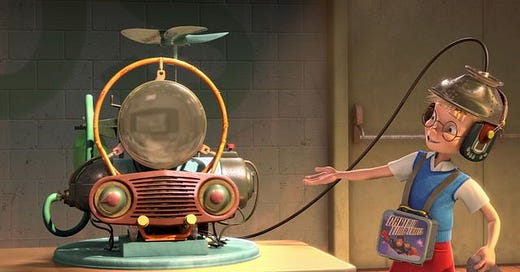


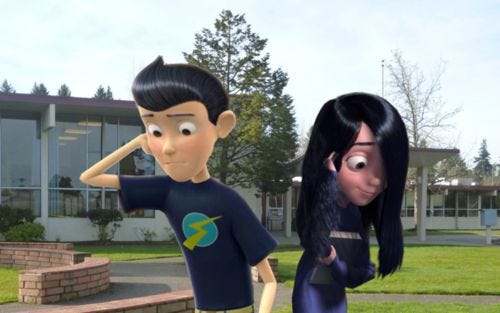

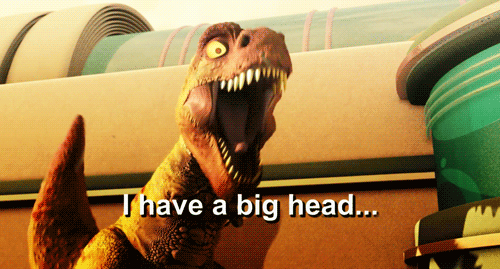


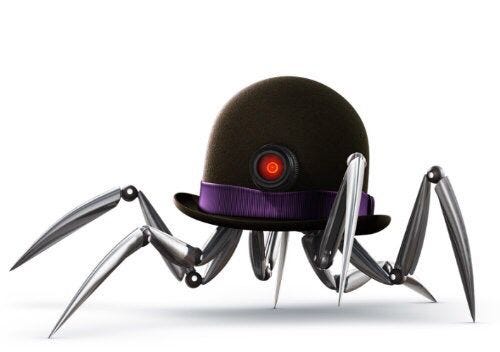
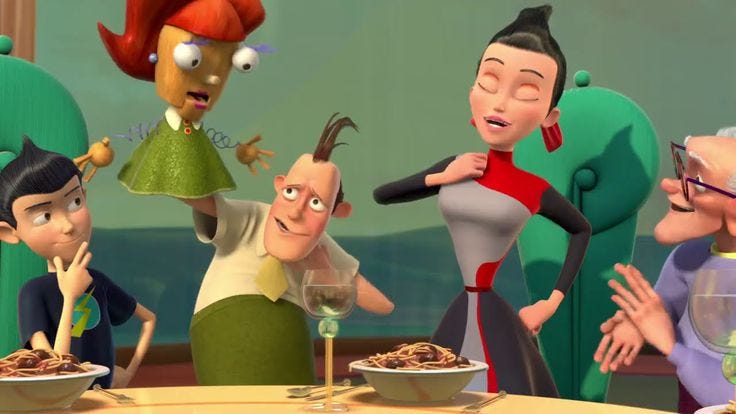
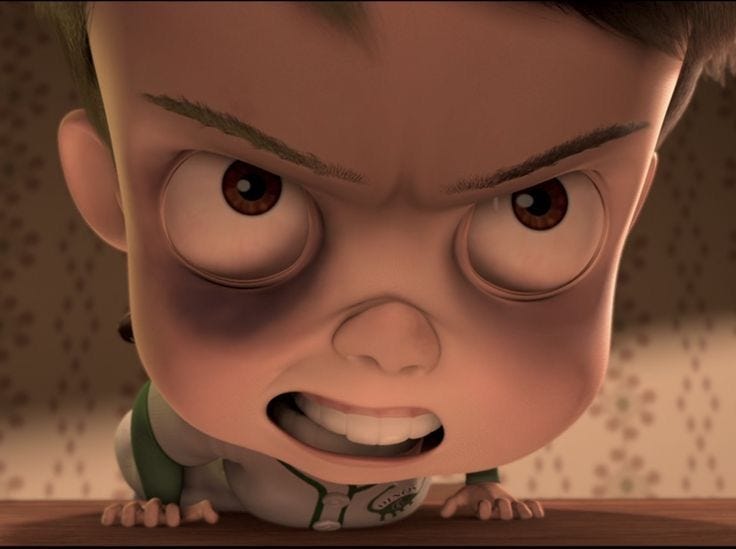
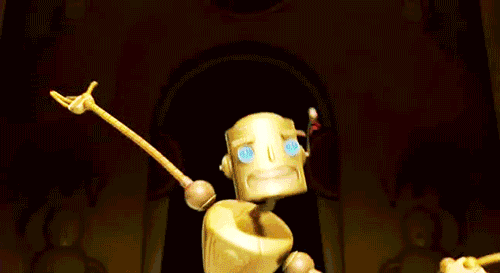
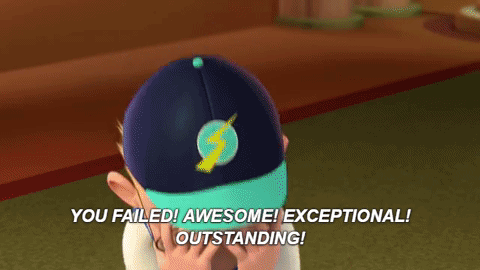
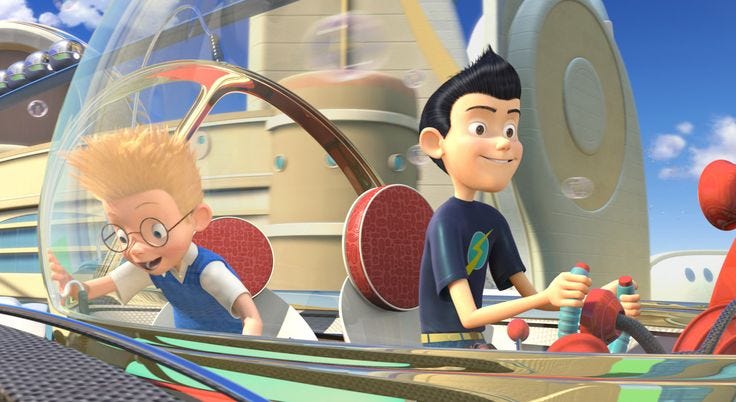
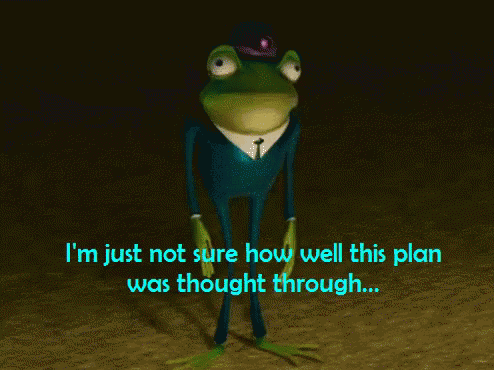
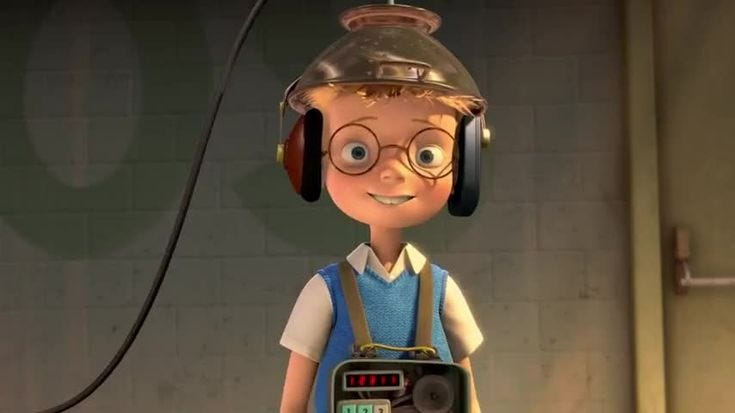
i honestly love that movie too. i’ve watched it so many times since i was a kid and it still hits every time. definitely one of those underrated disney movies people don’t talk about enough, but it’s actually so good.
took me back to a classic. added to my “to watch” list. thank you. thanks for writing this! reminded me that i love writing because i love writing, and that’s all that matters. keep going 💕